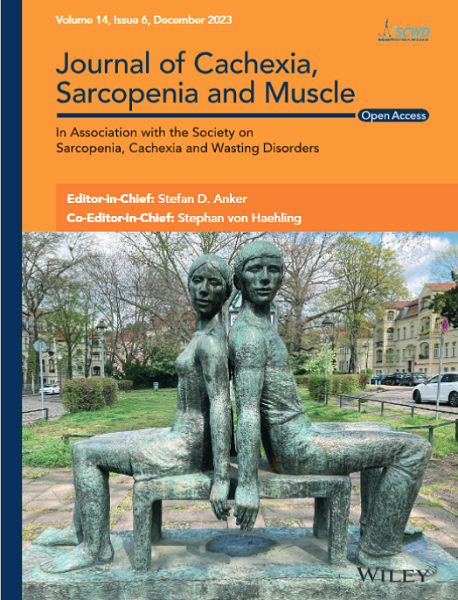Leptin signalling altered in infantile nephropathic cystinosis-related bone disorder
Abstract
Background
The CTNS gene mutation causes infantile nephropathic cystinosis (INC). Patients with INC develop Fanconi syndrome and chronic kidney disease (CKD) with significant bone deformations. C57BL/6 Ctns−/− mice are an animal model for studying INC. Hyperleptinaemia results from the kidney's inability to eliminate the hormone leptin in CKD. Ctns−/− mice have elevated serum leptin concentrations. Leptin regulates bone metabolism through its receptor that signals further via the hypothalamic melanocortin 4 receptor (MC4R). Leptin signalling may affect bone health in Ctns−/− mice.
Methods
We first defined the time course of bone abnormalities in Ctns−/− mice between 1 and 12 months of age. We used both genetic and pharmacological approaches to investigate leptin signalling in Ctns−/− mice. We generated Ctns−/−Mc4r−/− double knockout mice. Bone phenotype of Ctns−/−Mc4r−/− mice, Ctns−/− mice and wild type (WT) mice at 1, 4, and 9 months of age were compared. We then treated 12-month-old Ctns−/− mice and WT mice with a pegylated leptin receptor antagonist (PLA) (7 mg/kg/day, IP), a MC4R antagonist agouti-related peptide (AgRP) (2 nmol, intracranial infusion on days 0, 3, 6, 9, 12, 15, 18, 21, 24, and 27), or vehicle (normal saline), respectively, for 28 days. Whole-body (BMC/BMD, bone area) and femoral bone phenotype (BMC/BMD, bone area, length and failure load) of mice were measured by DXA and femoral shaft biochemical test. We also measured lean mass content by EchoMRI and muscle function (grip strength and rotarod activity) in mice. Femur protein content of JAK2 and STAT3 was measured by ELISA kits, respectively.
Results
Bone defects are present in Ctns−/− mice throughout its first year of life. The deletion of the Mc4r gene attenuated bone disorder in Ctns−/− mice. Femoral BMD, bone area, length, and strength (failure load) were significantly increased in 9-month-old Ctns−/−Mc4r−/− mice than in age-matched Ctns−/− mice. PLA and AgRP treatment significantly increased femoral bone density (BMC/BMD) and mechanical strength in 12-month-old Ctns−/− mice. We adopted the pair-feeding approach for this study to show that the protective effects of PLA or AgRP on bone phenotype are independent of their potent orexigenic effect. Furthermore, an increase in lean mass and in vivo muscle function (grip strength and rotarod activity) are associated with improvements in bone phenotype (femoral BMC/BMD and mechanical strength) in Ctns−/− mice, suggesting a muscle-bone interplay. Decreased femur protein content of JAK2 and STAT3 was evident in Ctns−/− mice. PLA or AgRP treatment attenuated femur STAT3 content in Ctns−/− mice.
Conclusions
Our findings suggest a significant role for dysregulated leptin signalling in INC-related bone disorder, either directly or potentially involving a muscle-bone interplay. Leptin signalling blockade may represent a novel approach to treating bone disease as well as muscle wasting in INC.


 求助内容:
求助内容: 应助结果提醒方式:
应助结果提醒方式:


